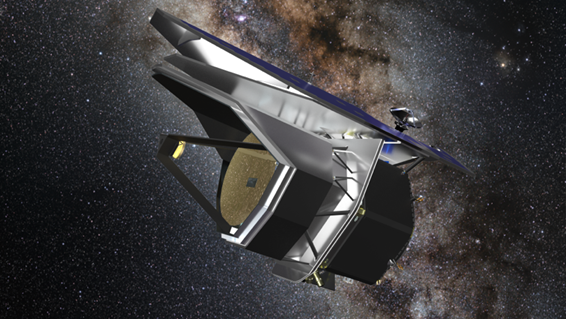Seb Oliver
Co-Evolution of Galaxies and Supermassive Black Holes Since Cosmic Noon with PRIMA.

Figure: Artist’s representation of the PRIMA observatory: Courtesy NASA/JPL-Caltech
Star formation and black hole growth are perhaps the two most intriguing aspects of galaxy evolution. While galaxies and their central black holes operate on vastly different spatial scales, the Universe today shows a remarkable scaling relationship between galaxy stellar mass and central black hole mass. How did this come to be? Did they grow together, or via episodes where one is dominant and the other suppressed?
The Probe far-infrared Mission for Astrophysics, PRIMA, will provide the first integrated census of star formation and black hole growth when galaxy evolution was most active, between ~ 9 billion and 3 billion years ago. PRIMA's far-IR spectrophotometry simultaneously measures black hole accretion rate, star formation rate, and outflows from massive star-forming galaxies to establish how they are linked.
This simultaneous measurement is only possible in the mid- and far-infrared because dust obscures UV and optical radiation which is often used to track star formation, and gas obscures X-rays typically used to track black hole growth.
PRIMA is being proposed as the first $1B NASA Astrophysics Probe-class mission. It would be launched in 2032. Prof. Seb Oliver is one of the 27 PRIMA co-investigators and leads the UK involvement in PRIMA, funded by the UK Space Agency. Critical to PRIMA’s success will be to employ the world-leading XID+ modelling methodology developed here at the University of Sussex in Oliver’s group to disentangle the emission from different galaxies.
Your project will be to develop the XID+ modelling. The hyperspectral imaging and spectroscopy of PRIMA provide the keys to unlocking blended emission from multiple galaxies. You will extend XID+ to fully exploit this new information. You will test your methods on state-of-the-art galaxy evolution simulations. You will design the experiments that can be done with PRIMA and how they will be able to answer these fundamental questions.
For more information/to apply for these projects, please contact Prof. Seb Oliver (email: S.Oliver [AT] sussex.ac.uk).